Ryan Day and the Ohio State offensive staff had perhaps their best performance to date in breaking the Buckeyes’ offensive tendencies and protecting Ohio State’s base run plays in Ohio State’s 49-20 dismantling of Michigan State. As previously discussed, Day and his staff have seemingly rededicated themselves this season to minimizing the Buckeyes’ tendency to run duo and wide stretch from pistol and under center (and throw from shotgun with an offset halfback) after Michigan exploited those tendencies last November.
Running from formations with a deep tailback and throwing when the back is offset is prevalent across football, as the former supports downhill runs while the latter offers better pass protection. While an offense (or defense) should have tendencies because it reflects that offense’s base concepts, a team must strategically break those tendencies lest an opponent exploit them.

Against Michigan State, Ohio State again utilized both of its base run concepts. Below, the Buckeyes run wide zone from under center with fast Y-motion.
And here, Ohio State runs duo, bringing Emeka Egbuka in tight to create six playside gaps against Michigan State’s cover 3 weak (safety rotates down away from the formation strength).
Yet Day protected those plays throughout in both the run and the pass game with greater run game diversity and play action against the Spartans’ heavy use of cover 3 weak, quarters, and Hot pressure concepts. For example, from pistol, Day used several non-stretch runs.
RELATED: Check out past analysis pieces including Rutgers & Wisconsin
Ohio State repeatedly ran windback, which shows initial wide zone action before effectively turning into duo opposite with the wide receiver leading.
As with duo above, the Buckeyes motioned into tighter personnel groupings, as Michigan State would not respond with the motion. Below, Michigan State’s linebackers fell back with the wide receiver lead block, leaving the Spartans down numbers to the backside and enabling a cutback by TreVeyon Henderson.
The Buckeyes likewise on multiple occasions ran inside split zone from pistol with jet motion.
And at the goal line, Ohio State for the first time ran down-G, which features the playside guard pulling and kicking out to target defenses widening in anticipation of wide zone.
From there, Day utilized multiple play action concepts from under center and pistol that featured many of Day’s staple pass concepts. Ohio State again repeatedly ran naked bootleg flood; below using the same tight end fast motion as they used for split zone.
But the Buckeyes also used multiple dropback play action concepts. Here, CJ Stroud opened up for front side play action, hitting Julian Fleming on double-in routes.
Similarly, below Stroud reversed out in play action from pistol to throw an all curl concept against cover 3.
The Buckeyes used similar hard play action with a guard pulling to throw a two-man “Dagger” concept for a touchdown against Michigan State’s Hot pressure (hot is a six man pressure with three deep defenders and two underneath seam defenders eyeing the quarterback).
On Dagger, the number 2 inside receiver runs a vertical, with the number 1 outside receiver coming underneath on a deep dig. On the touchdown, the nickel carried Egbuka vertically while his route held the deep middle safety, allowing Marvin Harrison Jr. to come free on the dig.
Ohio State also repeatedly used orbit motion for lead sweeps and play action—again taking advantage of Michigan State’s lack of rotation with such motion.
For example, below, Ohio State fakes a sweep to Henderson off orbit motion to run a two-man Yankee concept variant. Michigan State’s playside cover 4 safety was held by the play-fake and the backside safety by the deep hook, opening up Fleming to the post.
Stroud and Harrison Jr. likewise took advantage of outside single coverage opportunities when presented, such as below when Michigan State used a cover 4 bracket on Egbuka in the slot.
Similarly, here, Stroud hit Harrison on third down against a cover 1 five man pressure scheme.
Exploiting such single coverage outside will remain critical, as defenses have shown a propensity to use man coverage pressures or bracket the slot—particularly with how well Egbuka is playing. Such bracket concepts will likely be even more prevalent when Jaxon Smith-Njigba returns.
As can be seen with Down-G, Day also continues to expand Ohio State’s under center heavy-run packages.
For example, the Buckeyes were stopped on third and one on their base short yardage tight zone cab run (meaning that the tight ends base block the backside. As previously discussed, Ohio State has lessened the tendency on standard downs of running opposite halfback alignment in shotgun with same-side wide zone.
But tight zone remains a tendency from shotgun in short yardage, and the play is susceptible to backside penetration when defenses are keying on that tendency.
But on fourth down, Ohio State went under center with a balanced, two-tight end “Ace” set. With Michigan State pinching inside for a potential QB sneak, the Buckeyes ran wide zone for an easy first down—with being under center in such situations allowing Ohio State to run equally in either direction.
The one hiccup in an otherwise stellar day for Stroud and the Buckeye offense was Michigan State’s interception return for touchdown. As Day, Stroud, and Egbuka described post-game, the Buckeyes were running a pre-snap hitch relief with mid-zone, where Stroud pulls and throws the hitch if the corner is aligned in off-coverage pre-snap.
The route can be converted to a vertical if the corner stays tight. At the snap, the deep third corner should have gotten depth. But he read Stroud’s eyes and made the interception after Egbuka felt tight coverage and converted the route vertically.
Although Egbuka likely should not have converted to a vertical route because the corner was not in press man, Stroud also should likely not have pulled from the run play because the corner was not in off-coverage. While Stroud may have anticipated the hot blitz coming—given the linebacker alignment—and expected the corner to bail, Ohio State had seven run blockers for Michigan State’s six defenders.
That play aside, Ohio State’s offense again operated at a high level—and that is without Smith-Njigba and against Michigan State, Miyan Williams.
As long at the Buckeyes continue to be more diverse in the run game, utilize Day’s core pass concepts off run-heavy looks, and convert outside against man coverage, Ohio State’s offense should be even better once those two return.
Defensively against the Spartans, Jim Knowles again utilized heavy amounts of single-high coverage concepts (principally cover 3) to apply a plus one against the run. Yet Knowles inserted Lathan Ransom at boundary safety to provide the Buckeyes more coverage versatility against Michigan State’s 11-personnel spread sets.
Specifically, Ransom’s ability to act as the deep middle safety allowed Knowles to often run cover 3-buzz strong with field safety Ronnie Hickman in the box—particularly to match number 3 against the Spartans’ heavy-use of trips formations to the field—maintaining the nickel on the slot receiver and keeping the Buckeye linebackers in the run fit.
But when Michigan State was in balanced 2 x 2 formations, Knowles could flip the coverage and run 3- weak away from the passing strength, with Ransom in the box and Hickman as the deep safety, again keeping the nickel on the slot, safety over the tight end, and linebackers in the box.
This allowed Ohio State to adjust with relative ease to motion, with one safety coming down and the other going back to deep middle.
Knowles similarly mixed in cover 3 cloud weak (or boundary corner blitzes) when Michigan State used “nub” formations (tight end to the boundary with multiple receivers to the field), still playing cover 3 but with the boundary corner squatting as the curl/flat defender. Knowles then has the deep safety carry crossing routes.
Up front on run downs, Knowles principally deployed four down alignments—with less odd-Jack looks than in recent games—and mixed in corner or nickel safety five man pressures from both the field and boundary.
But Knowles also mixed concepts, particularly on passing downs. He repeatedly used Tampa-2 from a 3-hi safety look, with Hickman as the middle of the field “pole runner” (note how Cameron Brown as the cover-2 corner carries the vertical route with trail technique until a flat threat appears).
Similarly, Ransom’s interception was set up by Knowles running cover 1 robber from a pre-snap five across, split safety look, with Hickman as the robber and Ransom as the deep defender.
And Michael Hall’s first sack was generated with a tackle-tackle (TT) stunt, with Hall going first through the B gap and 3-technique Taron Vincent looping into the backside A gap, combined with a delayed blitz from the inside linebackers after initially showing that they were dropping into coverage. Behind that six-man pressure, Ohio State played cover 0 with brackets on the single receiver to the bottom and slot receiver to the top.
Michigan State did target the Buckeyes’ three-high structure with now screens to the slot receiver for limited yards.
But the Spartans’ principal success came on outside back shoulder throws to Jaylen Reed against Ohio State’s corners. Such throws provide single coverage opportunities against Ohio State’s one high safety or quarters’ concepts—though, as noted, Knowles changed the picture with Tampa 2.
But such throws are also relatively low-percentage. And as Day has noted, the Buckeye corners have been in position and just need to complete the play—which will perhaps improve as Ohio State’s corners get more reps with improved health.
Even with those throws, Michigan State gained less than 200 yards against the Buckeyes’ starting defense, as Ohio State continues to limit opponents’ run games. The upshot is that, heading into the bye, Ohio State’s defense is now number 8 in Bill Connelly’s SP+, with the Buckeyes taking the top overall SP+ spot.

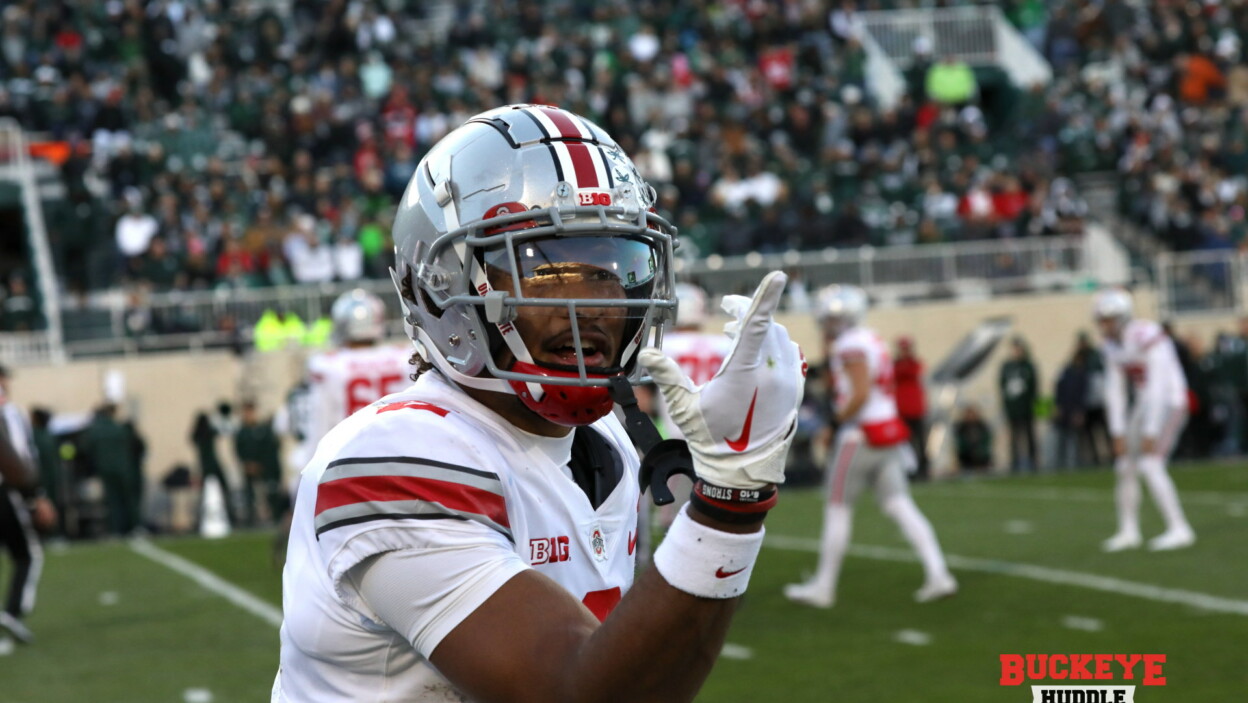
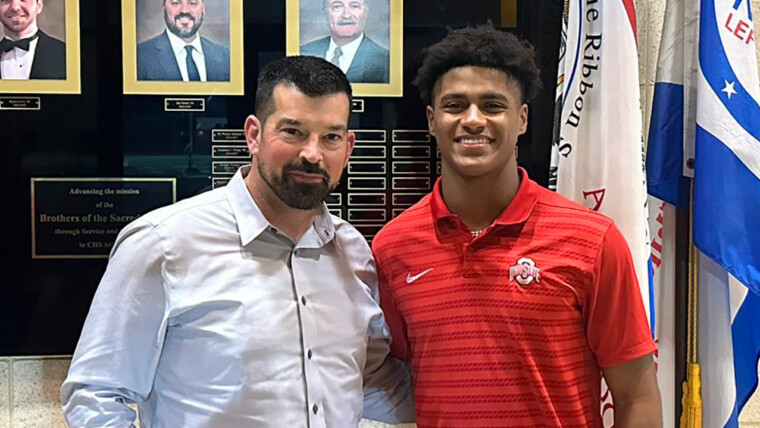

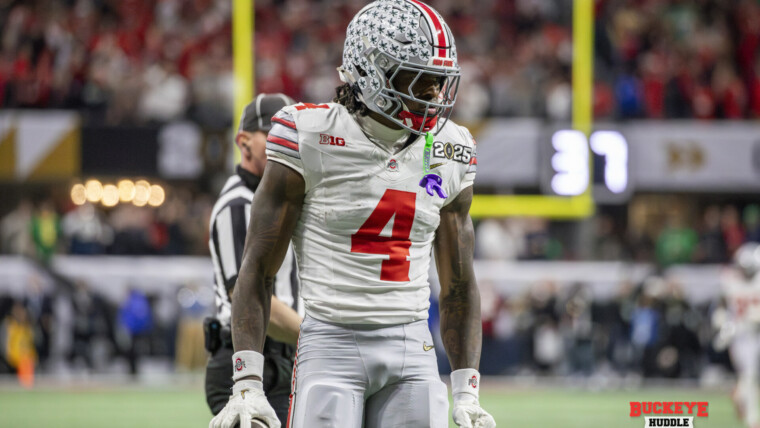
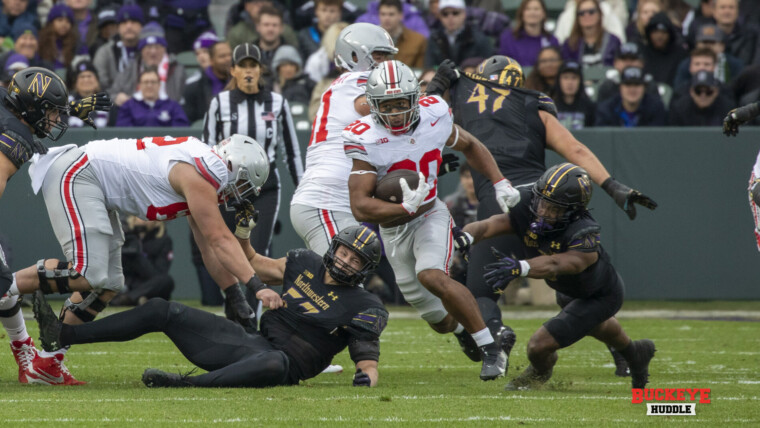
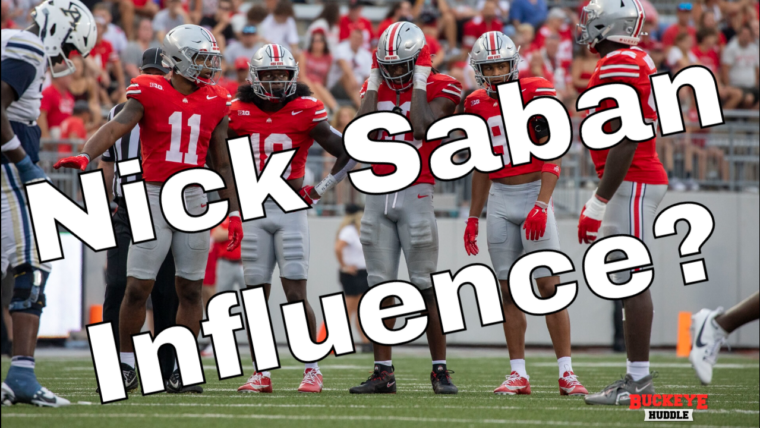
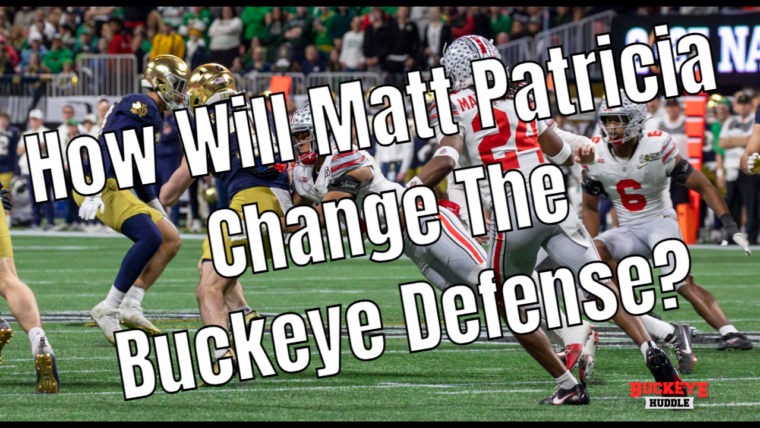
Blaine Bradford Commits To Buckeyes
No Longer Under The Radar, Tight Ends Setting Tone For Buckeyes
Max Klare Transferred To Ohio State To Become Complete Tight End
Ryan Day Talks Spring Midpoint, Building Depth Up Front
Tim Walton, Matt Guerrieri Detail Latest With Buckeye Secondary
Is It Too Early To Be Concerned About The Ohio State Quarterback Situation?
Ryan Day Talks Spring Midpoint, Building Depth Up Front
Blaine Bradford Commits To Buckeyes